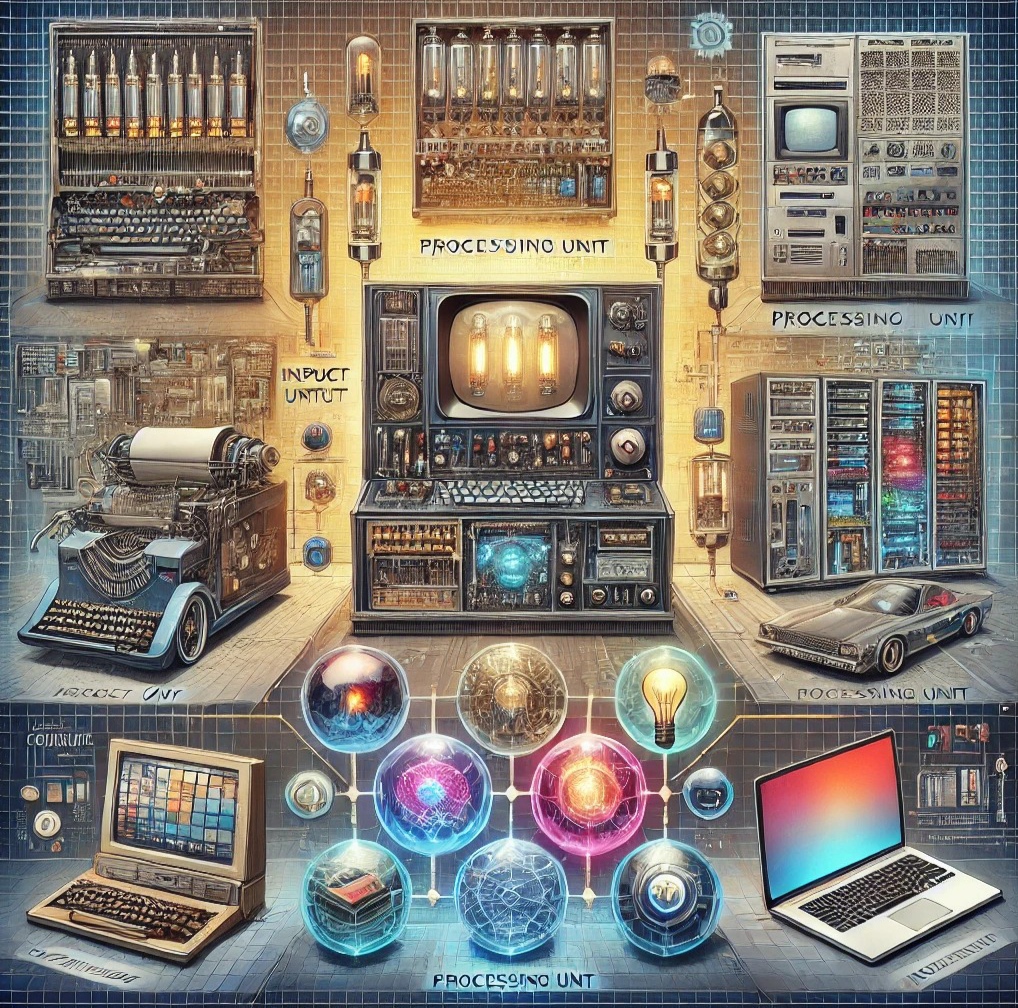Introduction
Computers are at the core of the modern technological revolution. From personal tasks to large-scale scientific research, these machines have become indispensable. This article explores the building blocks of computers, their history, and their role in shaping the future.
1. What Makes a Computer Special?
At its core, a computer is an electronic device that processes information, executes instructions, and produces results. Its ability to store, retrieve, and process data efficiently has made it a central tool for industries, education, entertainment, and more.
2. The Anatomy of a Computer
A computer consists of several crucial units:
- Input Unit: Accepts commands and data from users, converting them into digital signals.
- Processing Unit: This includes the Central Processing Unit (CPU), which is the computer’s “brain,” divided into:
- The Arithmetic Logic Unit (ALU) for calculations.
- The Control Unit (CU) for managing operations.
- Output Unit: Displays the results of processing in a human-readable format.
- Storage Units:
- Primary Storage: Temporary, volatile memory (e.g., RAM).
- Secondary Storage: Long-term storage (e.g., hard drives, flash drives).
3. The Evolution of Computing Power
Computers have gone through five key generations, marked by groundbreaking advancements like the introduction of transistors, integrated circuits, and artificial intelligence. Each generation brought faster, more efficient, and versatile systems.
4. Types of Computers: Diverse and Specialized
Computers are designed to meet different needs, ranging from personal use to advanced research:
- Supercomputers: Ultra-fast machines handling trillions of calculations per second. Used in fields like climate modeling and space exploration.
- Mainframe Computers: Supporting thousands of simultaneous users, ideal for banks and government institutions.
- Minicomputers: Medium-sized systems used in organizations for tasks like inventory management.
- Workstations: Powerful systems designed for technical work like animation, CAD, and scientific computations.
- Personal Computers: Everyday devices like desktops and laptops, perfect for individual use.
5. Key Features of Computers
Computers stand out due to their unique characteristics:
- Speed: Capable of processing millions of instructions per second.
- Accuracy: Performing tasks without errors when provided correct inputs.
- Versatility: Handling various tasks with equal efficiency.
- Automation: Operating without human intervention once instructions are provided.
- Reliability: Delivering consistent results over time.
6. The Client-Server Model: A Collaborative Ecosystem
Modern networks thrive on the client-server model. Clients request services or resources, and servers deliver them. This model supports seamless collaboration, enabling large-scale systems like cloud services and online platforms.
Conclusion
Computers have transformed from simple calculation tools to versatile systems driving innovation. By understanding their core components, history, and functionality, we gain insight into how they empower us to tackle challenges and create solutions for a better future.

Leave a Reply